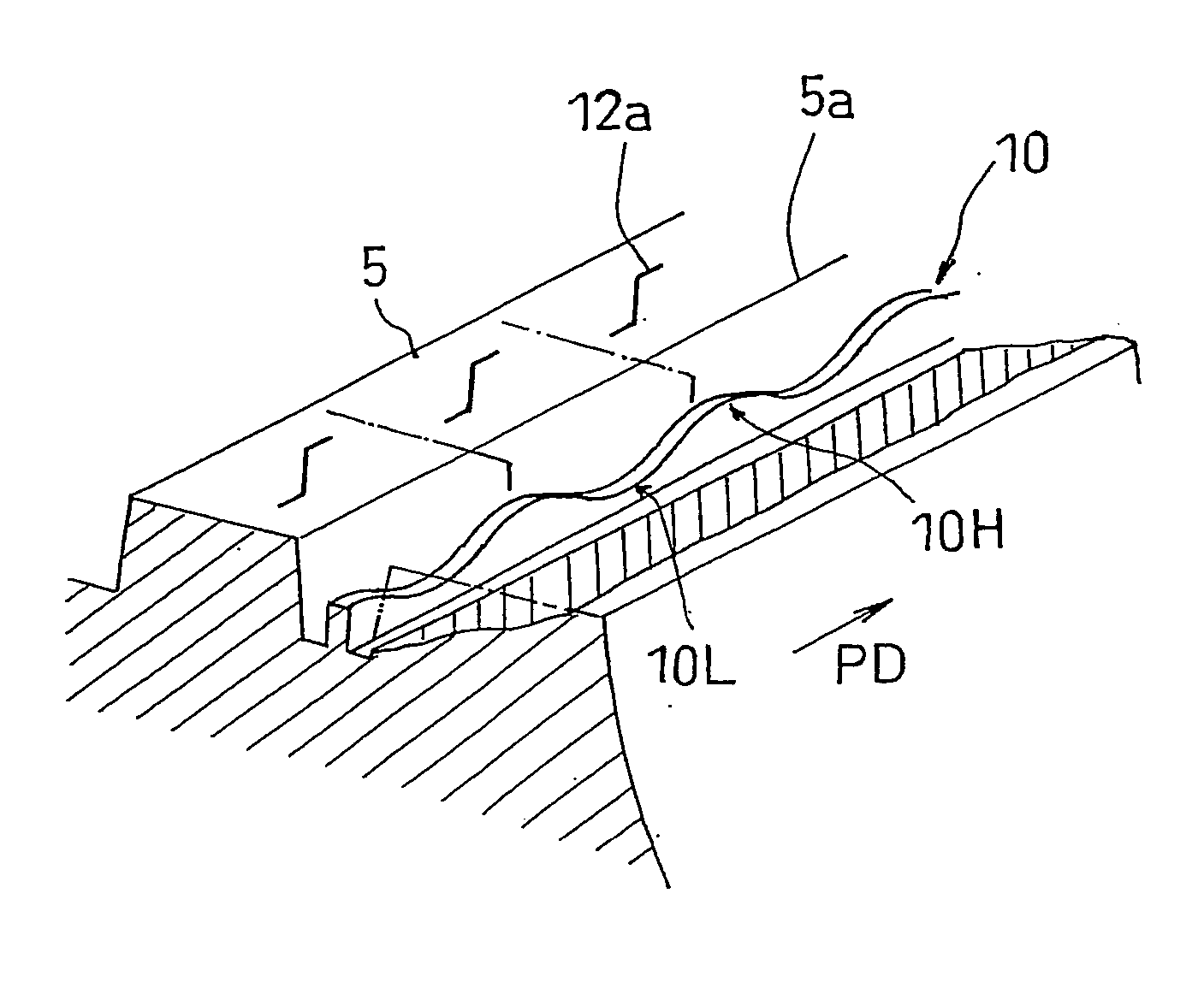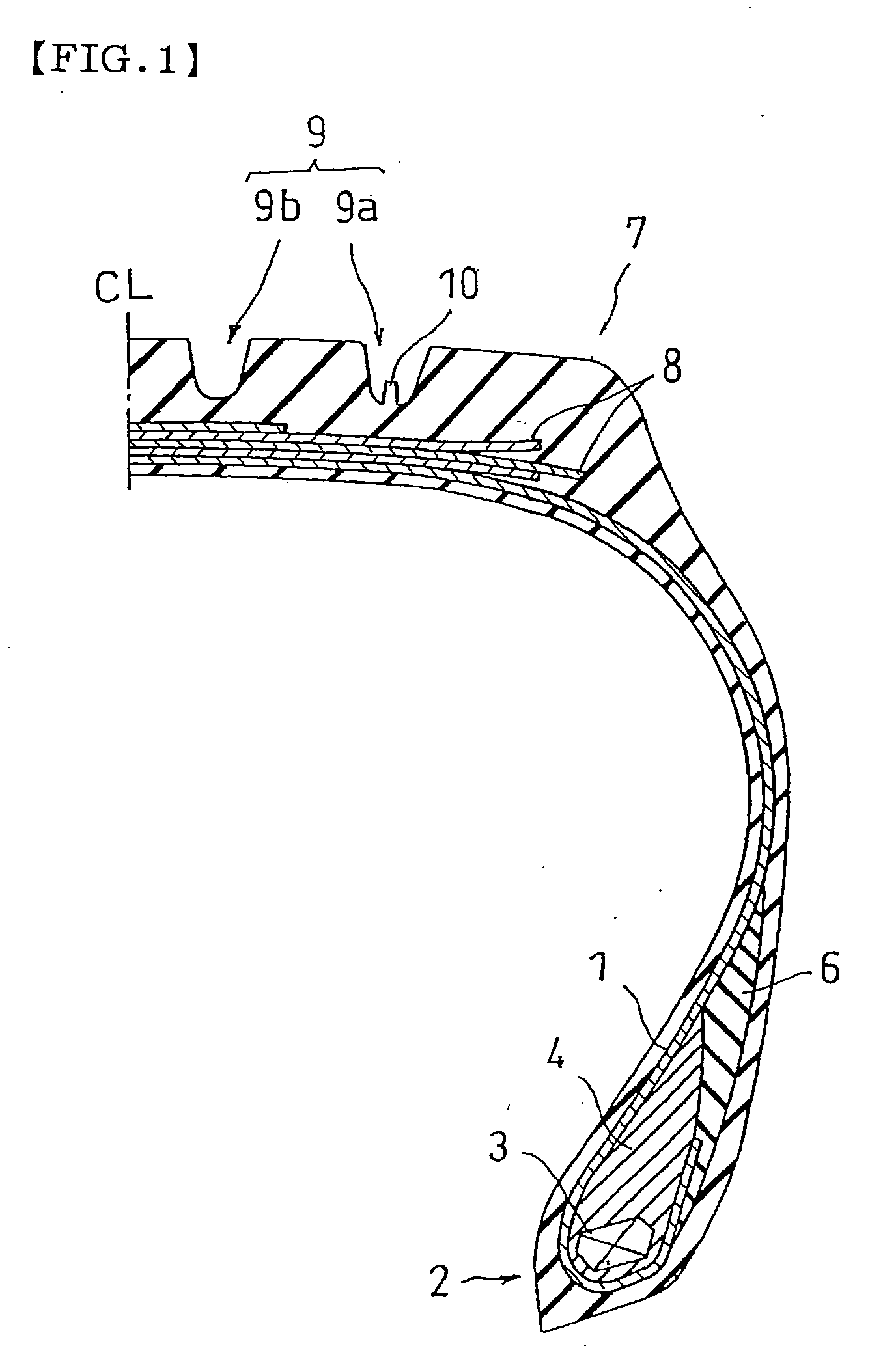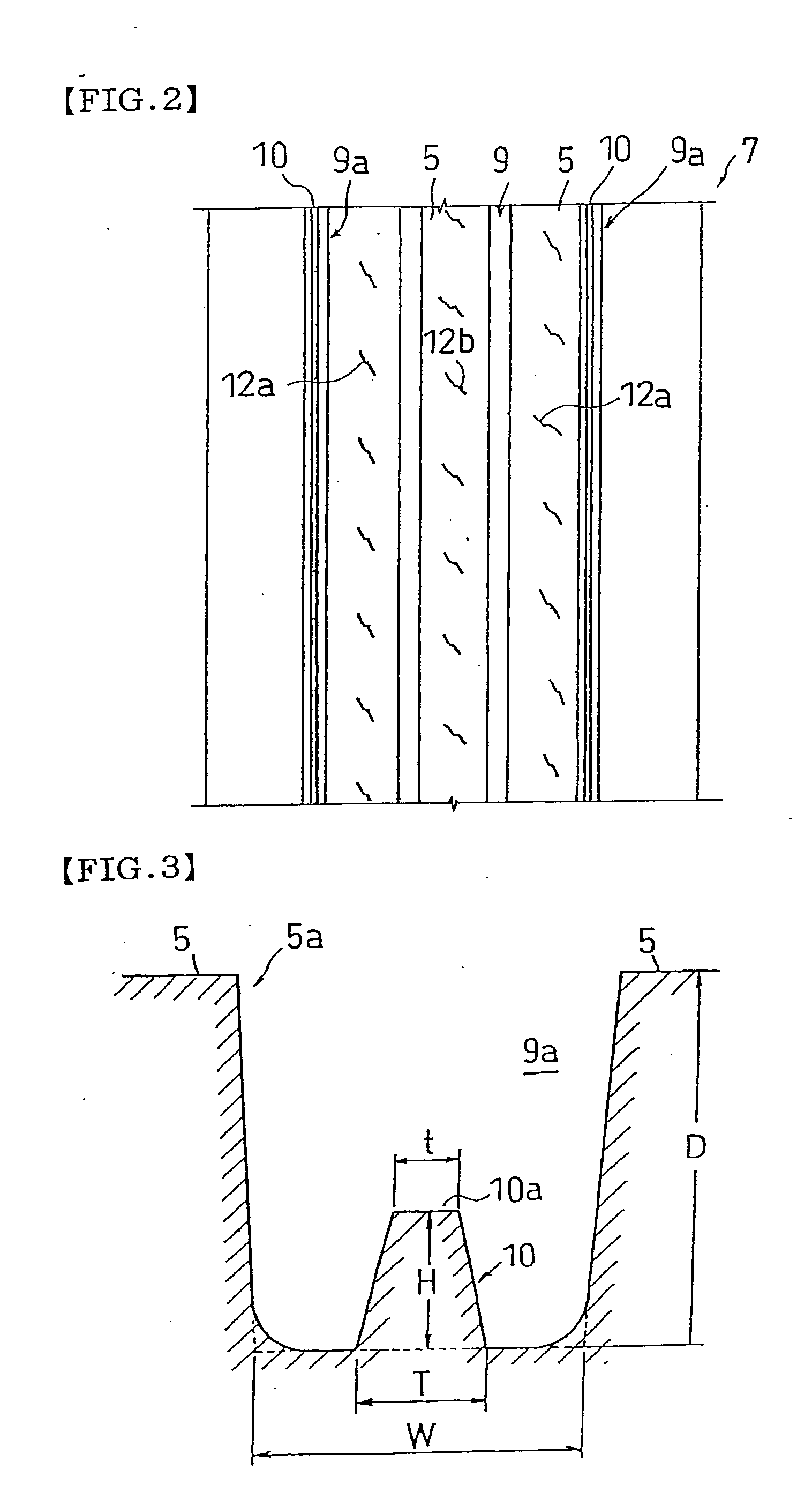Heavy load pneumatic tire
- Summary
- Abstract
- Description
- Claims
- Application Information
AI Technical Summary
Benefits of technology
Problems solved by technology
Method used
Image
Examples
example 1 (
Conventional Example 1 (Rib Pattern having No Sipeing)
[0061] In the rib pattern shown in FIG. 2, normal heavy load pneumatic tires (size: 295 / 75R22.5) having the same tread pattern except that a projecting stripe was not formed were prepared, and the above evaluation was carried out. The depth D of the main groove is 15 mm, the groove bottom width W of the main groove is 9 mm (these values are the same in the subsequent tests). The groove width of the closed sipeing is 0.6 mm, the length thereof is 10 mm, and the interval pitch is 35 mm, a distance to the rib edge is 9.5 mm, the inclination angle with respect to the circumferential direction is about 30° (these values are the same in the subsequent tests).
example 2 (
Conventional Example 2 (Rib Pattern having Sipeing)
[0062] In the rib pattern shown in FIG. 8, normal heavy load pneumatic tires (size: 295 / 75R22.5) of a tread pattern (groove length of sipeing provided in the rib edge is 4 mm, the groove depth is 15 mm, the groove pitch is 4 mm) were prepared, and the above-described evaluation was carried out.
Example of the Present Invention 1
[0063] In the rib pattern shown in FIG. 2, normal heavy load pneumatic tires (size: 295 / 75R22.5) in which size of the projecting stripe was set to a value shown in Table 1 were prepared, and the above-described evaluation was carried out. Table 1 shows a result thereof. The sipeing provided on the rib edge of the central rib is the same as that of the conventional example 2 (the conventional example 1, other examples of the present invention, reference examples and comparative examples have the same sipeings).
TABLE 1ConventionalExample of theexamplepresent invention121T / W——0.4H / D——0.4t / T——0.9Irregular Wear...
reference examples 1 and 2
[0065] In the rib pattern shown in FIG. 2, normal heavy load pneumatic tires (size: 295 / 75R22.5) in which the size of the projecting stripe was set to a value shown in Table 2 were prepared, and the above evaluation was carried out. Table 2 shows a result of the evaluation.
TABLE 2ConventionalReferenceExample of the presentReferenceexampleexampleinventionexample1212132T / W——0.20.30.40.50.6H / D——0.40.40.40.40.4t / T——0.90.90.90.90.9Irregular100109108113117121124WearresistanceCrack inAbsenceAbsenceAbsencePresenceAbsenceAbsencePresencethegroovebottom
PUM
 Login to View More
Login to View More Abstract
Description
Claims
Application Information
 Login to View More
Login to View More - R&D
- Intellectual Property
- Life Sciences
- Materials
- Tech Scout
- Unparalleled Data Quality
- Higher Quality Content
- 60% Fewer Hallucinations
Browse by: Latest US Patents, China's latest patents, Technical Efficacy Thesaurus, Application Domain, Technology Topic, Popular Technical Reports.
© 2025 PatSnap. All rights reserved.Legal|Privacy policy|Modern Slavery Act Transparency Statement|Sitemap|About US| Contact US: help@patsnap.com



